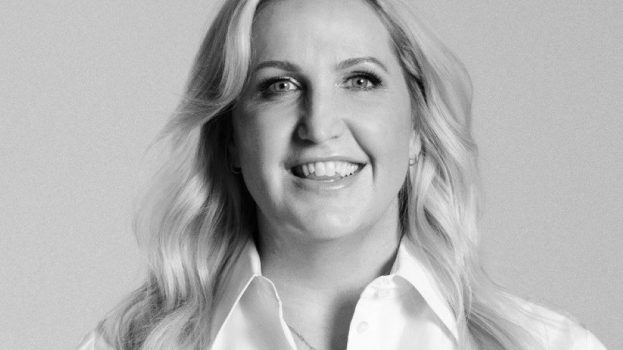If you took over the management of an established 10-year-old brand, you might be inclined to surmise that consumers ‘got’ your product over the decade since its launch.
Not so for Febreze brand builder Trevor Thrun, manager of P&G’s home care division, whose remit also includes Cascade, Dawn, Swiffer and the Mr. Clean business. He asked questions, and what his team did with the answers is why P&G Canada’s marketing efforts are leading Febreze strategy globally right now.
When Febreze was introduced to Canadians in 1998 with the launch of Fabric Refresher, it quickly established equity in the realm of eliminating pesky odours clinging to upholstery and other non-wipeable surfaces around the home. But six years later, when P&G decided to enter the $200-million Canadian air-care market with Febreze Air Effects spray and Scentstories’ disc-based system, the market was dominated by SC Johnson’s Glade and Reckitt Benckiser’s Airwick and Lysol brands, which had amassed 30%+ shares and were building off strong brand heritage. So the Febreze team’s mission was to parlay its odour-killing cred into the crowded air-care space.
Thrun, who’s been with P&G 11 years, came in midstream on Febreze’s air-care launch in Canada three years ago, bringing fresh eyes to the challenge. He looked at the numbers and saw great Febreze loyalty, but he also saw Fabric Refresher penetration and volume declining. Consequently, the Febreze team, which consists of two people on the marketing side, talked to consumers to find out why. It turns out that many didn’t believe odours lived in fabric and therefore didn’t see a need for the product. And some believed Febreze just covered up bad smells, rather than eliminating them.
Via shop-alongs, focus groups and consumer immersion exercises designed and executed by consumer research manager Ataollah Haftchenary, the team realized that there was more educating to do, and that U.S.-driven, consumption-focused marcom wasn’t going to work in Canada. Wider opportunity for trial and a stronger emphasis on functionality were identified as the missing links.
The research specifically pointed to spelling out the product benefits in marcom and packaging in order to let the value-conscious Canadian shopper mull over the dual whammy of ‘Eliminates Odours AND Freshens.’ It might not sound earth-shaking, but it worked.
Three years later, with the Febreze brand continuing to build out within the wider air-care market – including the launch of NOTICEables plug-in products in 2006 and candles in July ’07 – the Canadian strategy of encouraging trial and showcasing all the uses and efficacy of the line still resonates.
Febreze has gone from last-to-market, third-place standing in Canada to hit top dog sales in the air-care business in Q1 ’08. This is the second year that the Febreze Canadian business is the growth leader globally and for P&G Canada, and it’s the only market globally that is growing household penetration on the Fabric Refresher side.
‘We started as number three,’ recalls Thrun, ‘and last year we solidified as number two. We achieved number one status in April 2008 in Canada in this category, the only country where we’ve got number one status.’
A ‘Seven-Day Challenge’ educational effort led the initiative, followed by the ‘In the Know’ spots. ‘People understood what Febreze stood for,’ elaborates Thrun, ‘It was about making it relevant to their everyday life. ‘How is it important for me?’ That’s what the spots were focused on: ‘These are the odour cues you might have as well.”
Curiously, the campaign that conveyed this strategy of addressing trial barriers was pieced together by scanning creative sourced from other P&G markets globally. ‘One of the pieces that I’m a big proponent of is looking for efficiencies,’ says Thrun. ‘We looked at an Australian launch spot and did some testing, but it didn’t quite move the needle, so we looked again.’
Ultimately, Thrun and P&G brand manager Judy Okten – a key player in bringing the insights to life by working with consumers and overseeing the creative-quiltwork effort – found two 60-second U.S. DRTV spots that covered the right territory and worked with Grey New York to create two 30-second Canadian versions focused on education and driving trial. And they did it in three months at 10% of the typical cost, yielding best-in-class recall and brand linkage to boot.
Thrun describes the effort, which began in April 2007 and was refreshed in January, as ‘one of the strongest pieces we have.’ Now, this ‘search and reapply’ poster campaign’s insights are also being applied throughout the U.S. and Western Europe.
Thrun says Haftchenary’s efforts were critical in uncovering the trial barrier insights and testing the creative executions. ‘He truly lived our motto of ‘Consumer is the Boss,” he says. As did Grey New York. ‘They were with us all the way along the consumer research journey to turn insight into action. I have had a great team working with me to help deliver the results.’
And the Fabric Refresher success fuelled the air-care expansion strategy. ‘It’s a new category for Canadians in general, and for us,’ explains Thrun. ‘We spent a lot of time talking to consumers about what they liked and what they were looking for, and found odour elimination worked well in air care, so we had a fairly strong platform.
‘We had to shake up the category with design expertise,’ recalls Thrun of the initial 2004 air-care forays. ‘Air Effects, our instant action product, came into the market with a fresh look, and we developed design trademarks around the delivery system.’ P&G opted for a much lighter delivery, whereas its competitors were typical sprays. ‘Air Effects quickly became a dominant player,’ he says. And in the case of Scentstories, the innovation was designing a product that would deliver a continuous scent experience.
Most recently, the brand extended into the candle biz with Febreze Candles. Again, Thrun attributes success to a Canadian-specific value claim designed for comparative shoppers in this crowded category, which touts ‘up to 30 hours of Febreze Freshness.’ Packaging tweaks that stress ‘eliminates odors and freshens’ as well as duration are among the Canadian insights being picked up globally.
And while Thrun says P&G can often use a single platform, he and brand manager Marc Aube, along with BCP, created Quebec-specific marcom to compete in the particularly competitive candles category in that market. ‘In Quebec, they enjoy more of an emotional connection,’ says Thrun, explaining the use of Quebec personality Clodine Desrochers for market-specific spots created by BCP prior to the summer 2007 product launch.
Overall, Thrun attributes Canada’s success in beating major markets like the U.S., U.K. and Japan in driving Febreze’s growth to talking to Canadians. ‘We spend time understanding the consumer as the user, and as the shopper.’
And what were some of the insights they uncovered? ‘The key piece for us is that it’s a little more similar to the beauty category,’ he says. ‘Consumers are looking for an experience. They like to spend some time shopping it and experiencing it.’ So the challenge became ‘how to deliver news to the category – new products and experiences.’
The most recent marketing eureka for air care came directly from research on fabric refreshers. ‘I was practically living with consumers over the past year and a half,’ explains Thrun. He and his team consistently heard that people wanted a comfortable environment, and that meant finding ‘natural’ air-freshening solutions.
In pursuit of that, not surprisingly, people love to open the window. ‘It’s uncanny how many times we heard that analogy,’ says Thrun. So they looked at bringing that to life.
‘We had just launched the energized continuous action biz,’ recalls Thrun, referring to plug-ins and battery-powered air enhancers such as NOTICEables. As they were looking for an opportunity to tie all the Febreze products together, Thrun says the open window refrain kept cropping up. And being Canada, ‘it came to my mind, what do you do when it’s 30 below?’
That led to positioning Febreze as the less chilling winter alternative to opening the window. To catch the attention of harried shoppers, an eye-catching campaign was mounted that made the end game really clear. ‘Let in the ‘breze,’ with its wintry window imagery, positioned the benefits in a whimsical way that was unusual for the category, and earned share of voice leadership for P&G. At retail, the program also earned exponential display and support.
With minimalist copy that read: ‘Freshen up without covering up,’ the simple graphic of a frosted window had great stopping power in OOH placements across Toronto and national reach via online and in print, while full-pallet displays at retail (a first) clinched the deal with free trial coupons.
Thrun says the key was matching the media to the creative. ‘We wanted to have relevant touchpoints where consumers would think about opening windows or want to let in fresh air.’ Unique placements included public transit because, as Thrun points out, ‘there are odours, and you’re not allowed to open windows.’ The campaign also included five-storey-high building murals in Toronto featuring larger-than-life windows.
Thrun credits Okten for working with Cossette Toronto on the creative for this campaign; online was by Barefoot, and all worked closely with SMG.
This made-in-Canada ‘Let in the ‘breze’ approach is now being reapplied globally. And that’s why Canada is seen as the lead global market driving the Febreze biz forward. ‘What makes the Febreze campaign so special is that it taps into such a simple but powerful Canadian insight,’ says P&G president Tim Penner. ‘The message is crystal clear, and the campaign surrounds the target consumer with messages at every touchpoint to make the overall campaign feel bigger.’
A holistic campaign that innovatively tied products together in a crowded category earned Thrun and team Febreze the judges’ nod. And, according to Penner, the team effort was also a factor: ‘This was a great piece of work by many people across many of our agencies, all led by Trevor Thrun.’























